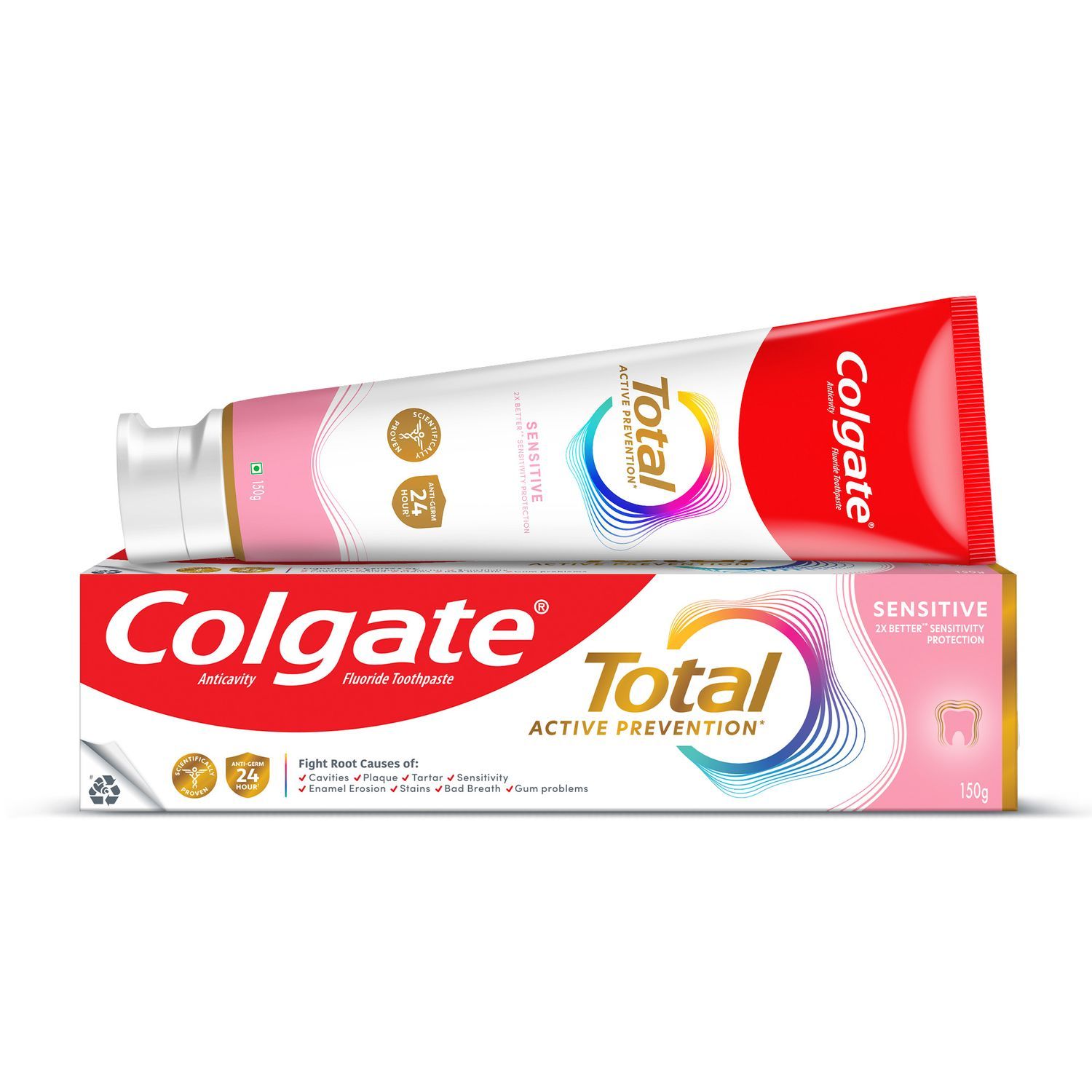-
-

TEETH WHITENING
What Is Stannous Fluoride Toothpaste?Stannous fluoride toothpaste helps prevent cavities, reduce sensitivity, fight plaque, and support daily gum and enamel health.

Selecting Dental Products
Best Toothpaste in India: Five Dentist-Recommended TypesToothpastes today are formulated to meet your every dental need and come in many flavours. Have your dental professional suggest the best toothpaste in India.
-
Science & Innovation
- ORAL HEALTH CHECK
- PRODUCT MATCH
- Colgate® | Toothpaste, Toothbrushes & Oral Care Resources
- Oral Health
- Cavities
- Saliva And Chewing Gum — The Benefits To Oral Health


As many of us know, saliva helps to keep the mouth moist. Saliva flow increases when we eat, allowing us to chew and swallow our food. It also has a protective effect by neutralizing acid when we eat a carbohydrate that lowers the pH of our mouth and clears away the food after a meal. When we combine saliva flow with chewing sugarless gum it creates a new opportunity to stimulate more salivary flow to neutralize acids from foods eaten1, 2. What does this mean to you? It means that you can decrease the amount of tooth decay by limiting the acid you your teeth come into contact with. After you eat, the pH of your dental plaque becomes acidic for a period of time, weakening teeth and making them susceptible to tooth decay.
As many of us know, saliva helps to keep the mouth moist. Saliva flow increases when we eat, allowing us to chew and swallow our food. It also has a protective effect by neutralizing acid when we eat a carbohydrate that lowers the pH of our mouth and clears away the food after a meal. When we combine saliva flow with chewing sugarless gum it creates a new opportunity to stimulate more salivary flow to neutralize acids from foods eaten1, 2. What does this mean to you? It means that you can decrease the amount of tooth decay by limiting the acid you your teeth come into contact with. After you eat, the pH of your dental plaque becomes acidic for a period of time, weakening teeth and making them susceptible to tooth decay.
A two-year sugarless chewing gum study was conducted on a population of children from third to fifth grade in Europe. Along with non-fluoridated water and regular fluoride toothpaste use, the results after just one year showed children that chewed sugarless sorbitol gum had a 41.7 percent reduction in dental caries compared to the control group of children who did not chew the sorbitol gum3. The study also showed that chewing three pieces of sugarless chewing gum per day was not difficult to maintain.
Prevention is simple. Talk to your dental professional about the smart choices you can make to help improve your oral health through the use of sugarless gum.
REFERENCES:
Park KK, Schemehorn BR, Stookey GK. Effect of time and duration of sorbitol gum chewing on plaque acidogenicity. Pediatr Dent. 1993; 15(3):197-202.
Koparal E, Ertugrul F, Sabah E. Effect of chewing gum on plaque acidogenicity. J Clin Pediatr Dent. 2000; 24(2): 129-32.
Szoke J, Banoczy J, Proskin HM. Effect of after-meal sucrose-free gum chewing on clinical caries. J Dent Res 80(8): 1725-29, 2001.
© 2010 Colgate-Palmolive Company
11/15/2010
This article is intended to promote understanding of and knowledge about general oral health topics. It is not intended to be a substitute for professional advice, diagnosis or treatment. Always seek the advice of your dentist or other qualified healthcare provider with any questions you may have regarding a medical condition or treatment.
ORAL HEALTH QUIZ
What's behind your smile?
Take our Oral Health assessment to get the most from your oral care routine
2.3 billion
people worldwide suffer from tooth decay
ORAL HEALTH QUIZ
What's behind your smile?
Take our Oral Health assessment to get the most from your oral care routine
2.3 billion
people worldwide suffer from tooth decay
Related Articles

Cavities
Why Tooth Cavity Filling at Home Won't Work
Cavities
What Causes Tooth Cavity: Formation and Prevention
Cavities
What Are Incipient Caries?Incipient caries are the beginning stages of a cavity. Find out more about incipient caries and how you can stop them in their tracks and avoid the drill.
Related Products

Helping dental professionals
More professionals across the world trust Colgate. Find resources, products, and information to give your patients a healthier future







